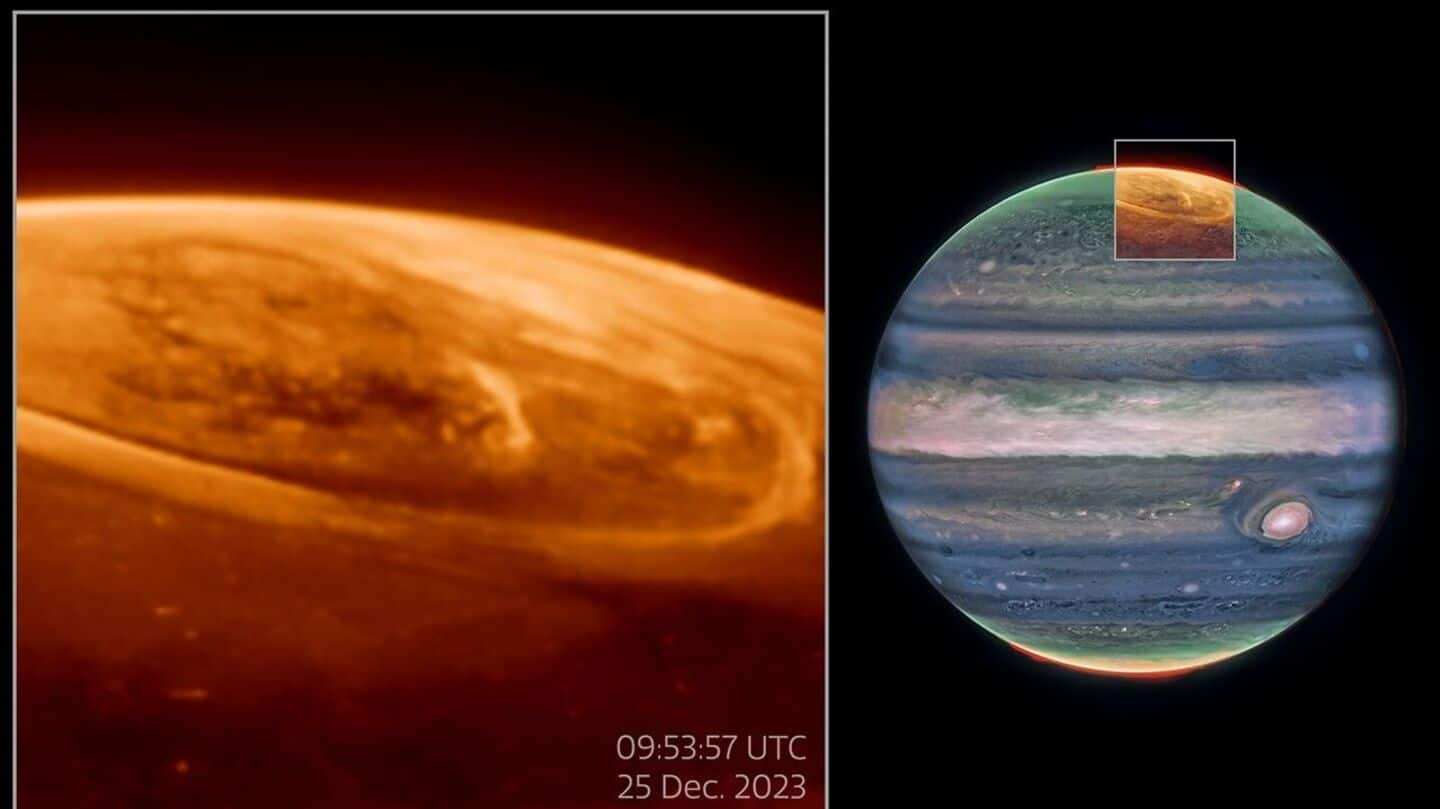
Jupiter's mega auroras look like they could swallow our planet
What's the story
NASA has released footage of mega auroras on Jupiter, the largest planet in our solar system, triggered by solar storms. Thanks to the James Webb Space Telescope, we have new insights into these auroras, which are hundreds of times more luminous than those seen on Earth. The findings illuminate Jupiter's magnetosphere and were published in the journal Nature Communications.
Dual source
Jupiter's auroras fueled by magnetic field and moon Io
Unlike Earth, where auroras are primarily driven by solar wind, Jupiter's auroras are powered by two main sources. Jupiter's intense magnetic field captures charged particles not only from the solar wind but also from its volcanic moon, Io. This additional source contributes to the planet's extraordinarily bright and dynamic auroral displays.
Rapid changes
Webb telescope's observations reveal rapid changes in auroras
The Webb telescope's observations also showed that auroras on Jupiter change rapidly, instead of gradually fading over time, as previously expected. Jonathan Nichols from the University of Leicester, who led these observations, was surprised by the discovery. He said they saw the entire auroral region fizzing and popping with light, sometimes varying by the second. The discovery of these mega auroras has significant implications for our understanding of planetary magnetospheres and atmospheres.
Discrepancy
Hubble telescope's observations provide additional insights
Interestingly, the Hubble telescope also captured the auroral event on Jupiter at the same time, giving them more data to compare. Nichols said the brightest light seen by Webb had no real counterpart in Hubble's pictures. This difference has prompted scientists to suggest that a combination of high amounts of very low-energy particles hitting the atmosphere may be responsible for this unique brightness, despite it being previously thought impossible.